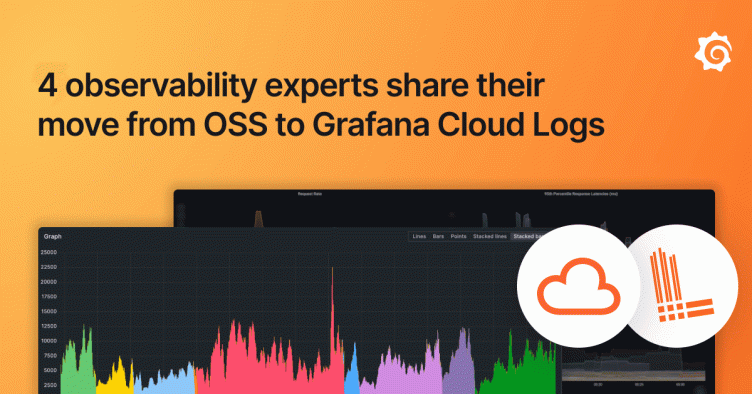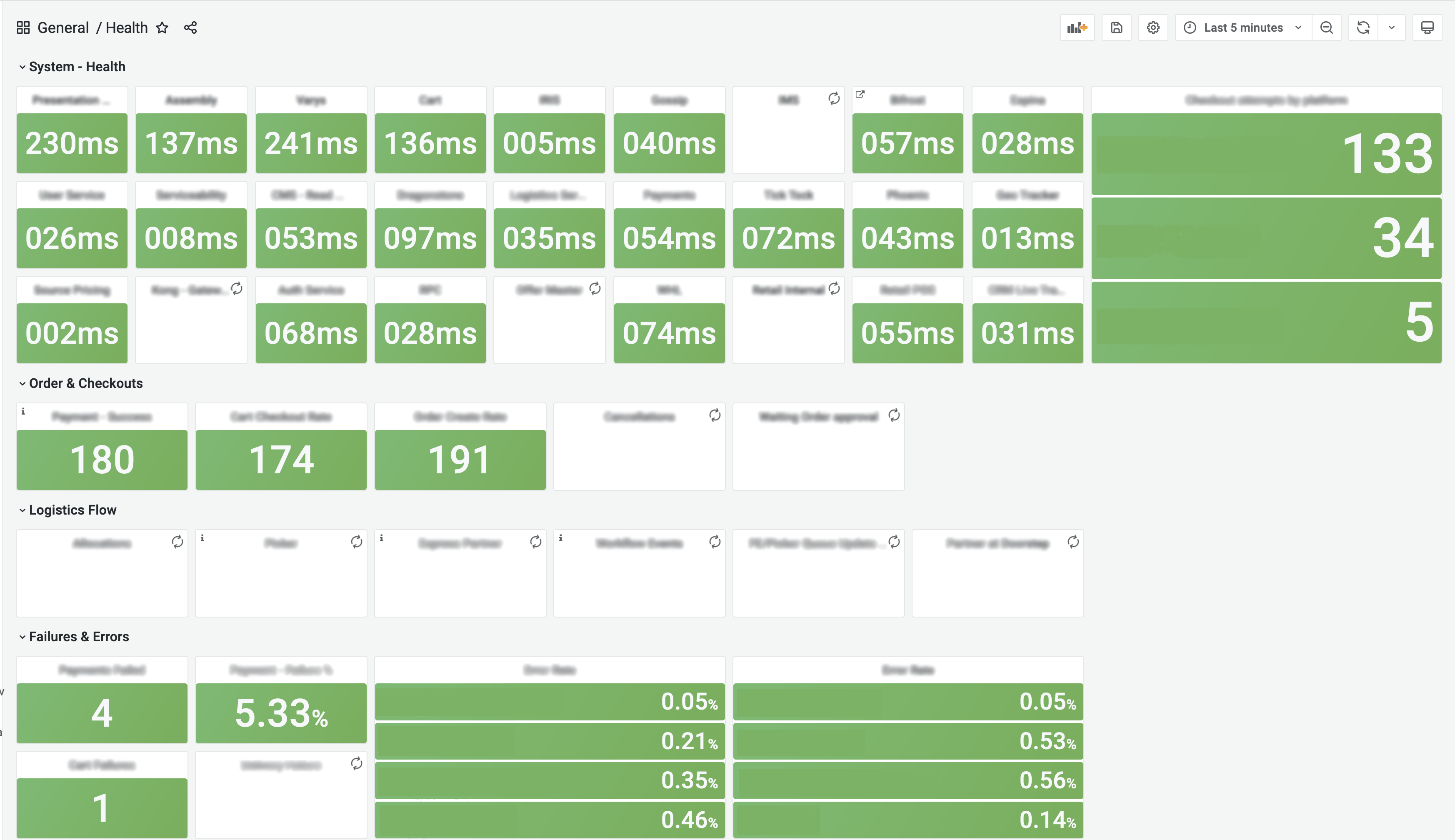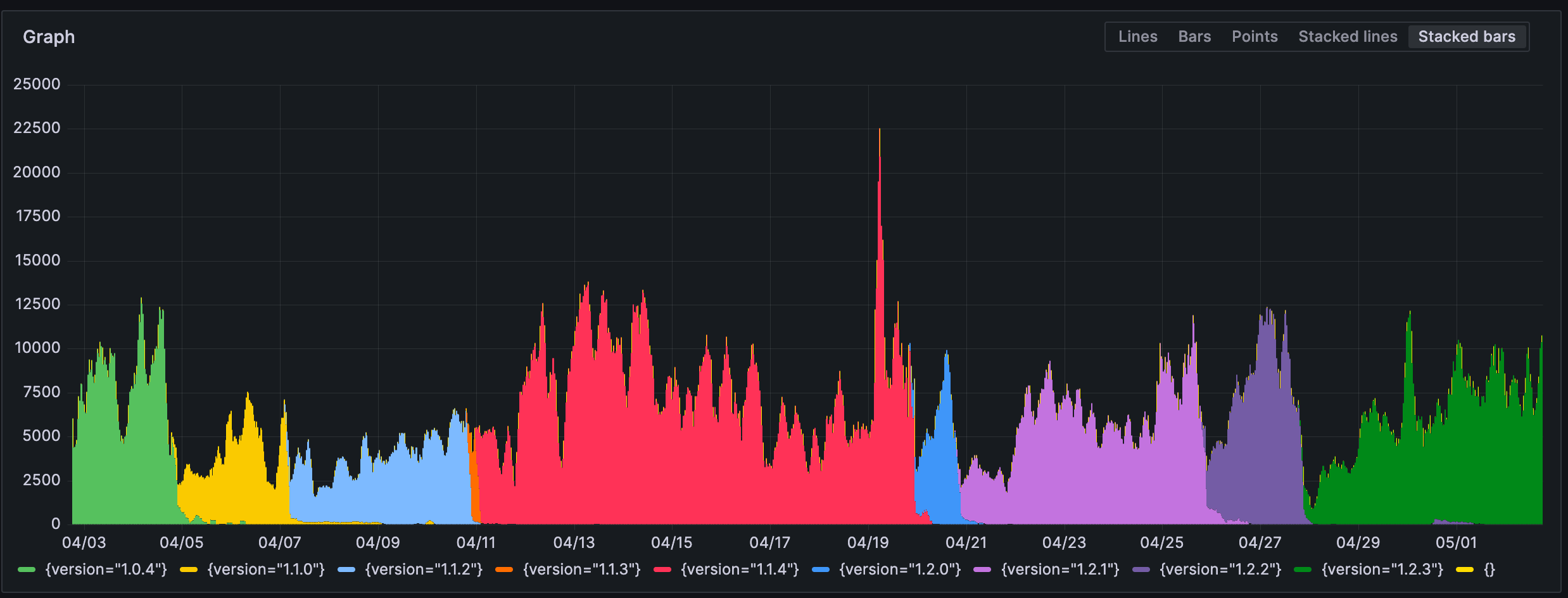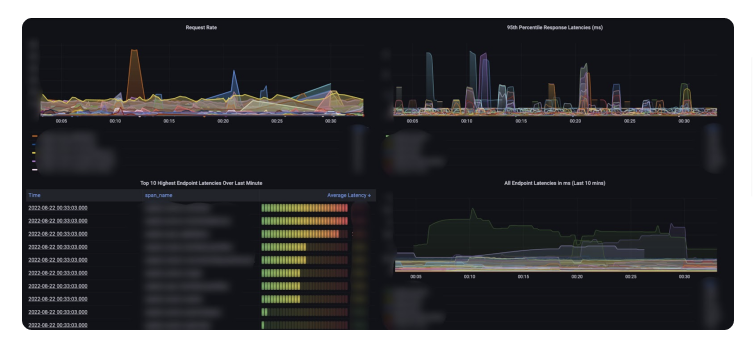
Log management with Grafana Cloud: 4 observability experts share their move from OSS to Grafana Cloud Logs
While we built Grafana Loki as an open source log aggregation system that is cost effective and easy to operate, let’s face it: sometimes there is no time or bandwidth to mess around with self-managing and self-hosting.
Luckily there’s the fully managed Grafana Cloud observability stack for log management. “Grafana Cloud is a no-BS platform. The engineering costs of hosting it ourselves would be much higher," says Jameel Al-Aziz, a software architect at Paradigm. “It was easy, it scaled, and the Grafana Labs team was incredibly supportive in onboarding us and making sure we were set up for success.”
Here, four observability experts share why they shifted from OSS to Grafana Cloud for log management — and the positive outcomes from their migration.
1. More time innovating, less time managing logs
Blinkit, formerly known as Grofers, is an instant grocery delivery company in India that serves millions of customers. But as they expanded their services to a broader swath of the country, “we were spending half of our time making sure everything was up and running with the ELK Stack and tuning our logs continuously so that we wouldn’t crash,” says Blinkit Engineering Manager Vaibhav Krishna.
That changed when Blinkit found Grafana Loki, which stored up to 60TB of log data each month for Blinkit. The team quickly realized they didn’t want to repeat previous mistakes and spend resources on maintaining a product versus innovating on new ones. So they quickly migrated over to the hosted Grafana Cloud Logs service, which now allows Blinkit to seamlessly integrate their metrics and logs in one place and use the comprehensive data in new, impactful ways.
“Between Loki and Grafana you can get your logs and metrics from your logs in one place,” says Krishna. “In certain use cases, Loki is the key monitoring tool, and we have started relying on Loki as one of our main metric sources as much as we do Prometheus.”

Check out how Grafana Cloud delivered on Blinkit’s observability goals.
2. Team is too small to maintain logs
Paradigm, the largest liquidity network in cryptocurrency, was using an IaaS provider for logging until software architect Jameel Al-Aziz joined the team and introduced Grafana Cloud Logs into the ecosystem.
“We could have hosted Loki internally, which is the beautiful thing about Grafana’s open source tooling. But we chose Grafana Cloud because we’re a small company and a small team, so we didn’t want to manage it ourselves,” says Al-Aziz.
Now you’re hard pressed not to find Grafana Cloud in action at Paradigm. When an issue comes up, the support team shares their Grafana Cloud link, which leads engineers to follow up with a different view of the logs. The main solutions engineer even credits Grafana Cloud for making his job infinitely easier.
“With our previous platform, everybody dreaded logging in to find information,” says Al-Aziz. “Now, we have three or four people looking at logs, slicing and dicing them in different ways, and feeling empowered to find information and root causes. It’s a totally different ballgame.”

Read more about how Paradigm uses Grafana Cloud to facilitate nearly 40% of the world’s cryptocurrency option flows.
3. Correlate logs with other telemetry
Before home renovation juggernaut Houzz started using Grafana Cloud Logs, their teams found searching for logs to be a challenge. Sending their logs and metrics into Grafana Cloud changed all that.
“The one-stop-shop experience with Grafana gives us the ability to cross-reference data with application workload and infrastructure metrics, which saves us time and makes our search for relevant logs much easier,” says Yoram Kruvi, DevOps Lead at Houzz.
Kruvi adds: “With the correlation of Prometheus, Tempo, and Loki data, we were able to put our fingers on real issues in the system, track them end-to-end, fix them, and see the recovery and improvements immediately.”

Learn more about Houzz’s observability renovation with Grafana Cloud.
4. Centralize observability in one cloud native tool
Exabeam has multiple cybersecurity offerings that require them to ingest petabytes of logs and events from hundreds of different vendors and products supporting DNS, firewalls, and cloud infrastructure and applications. To help manage all that data, Exabeam looked to pivot to a cloud-first approach. Their goal was to consolidate their observability efforts into one cloud native tool that had enough power and flexibility to address their ever-growing set of customers, metrics, and logs.
Their solution of choice: Grafana Cloud, which offered a full suite of services to meet their needs and extend their observability strategy. Their fully managed Grafana Cloud stack now leverages Grafana Cloud Metrics and Grafana Cloud Logs as well as eight different data sources and four Grafana Cloud solutions, including Kubernetes Monitoring and AWS CloudWatch.
Their robust suite of Grafana Cloud features allows the Exabeam team to be more confident and proactive in the face of issues. “We want to ensure there are real-time alerts, debugging, and investigations if the services are down or not performing to the expected SLOs,” says Dinesh Maheshwari, Technical Architect at Exabeam. “We need to get alerts on those and we need to measure all of it.”
Exabeam also carries over that confidence into their partnership with Grafana Labs. Says Maheshwari: “Grafana was able to support what we needed to build and will continue to build."
Check out Exabeam’s full observability journey with Grafana Cloud.
Grafana Cloud is the easiest way to get started with metrics, logs, traces, and dashboards. We have a generous forever-free tier and plans for every use case. Sign up for free now!



